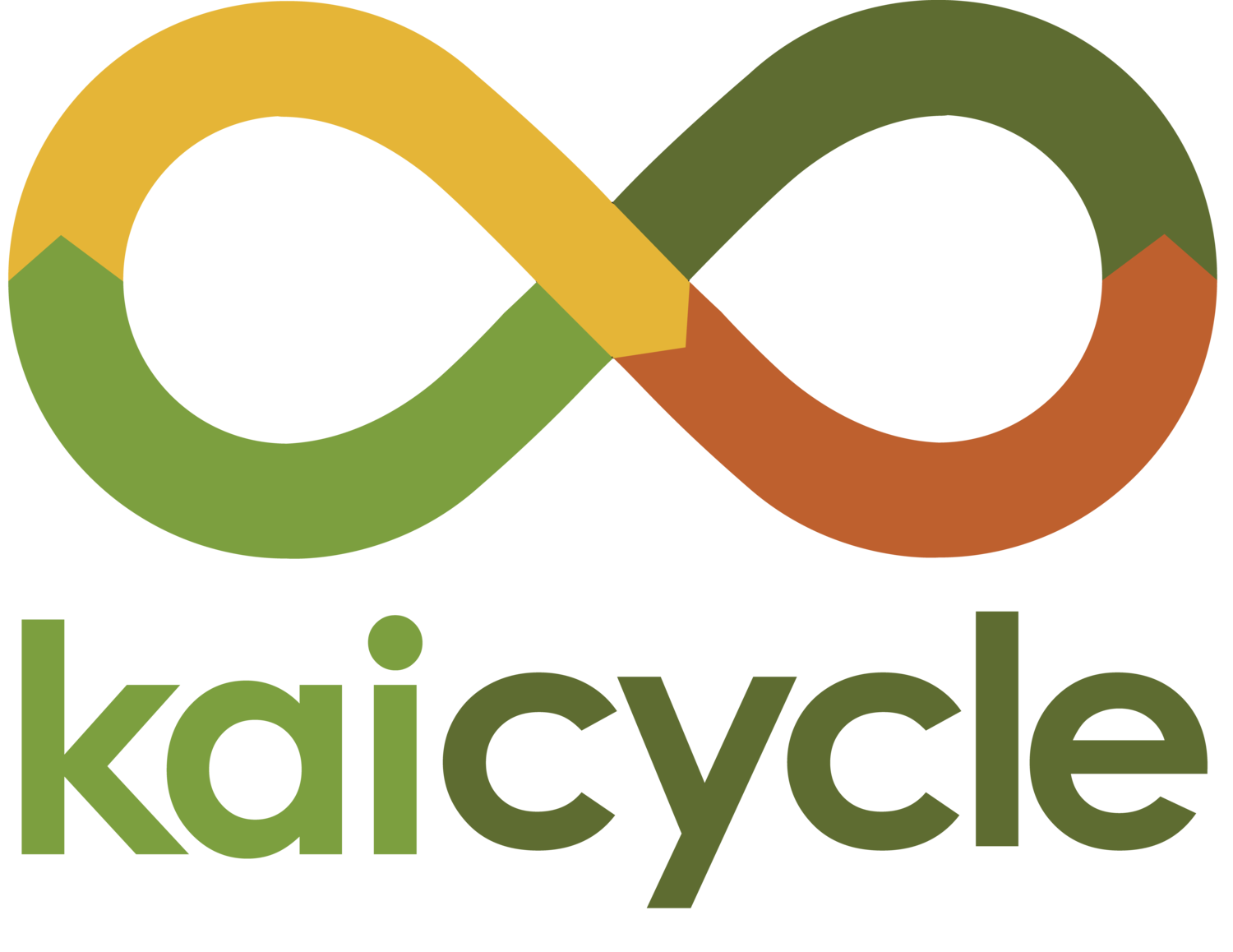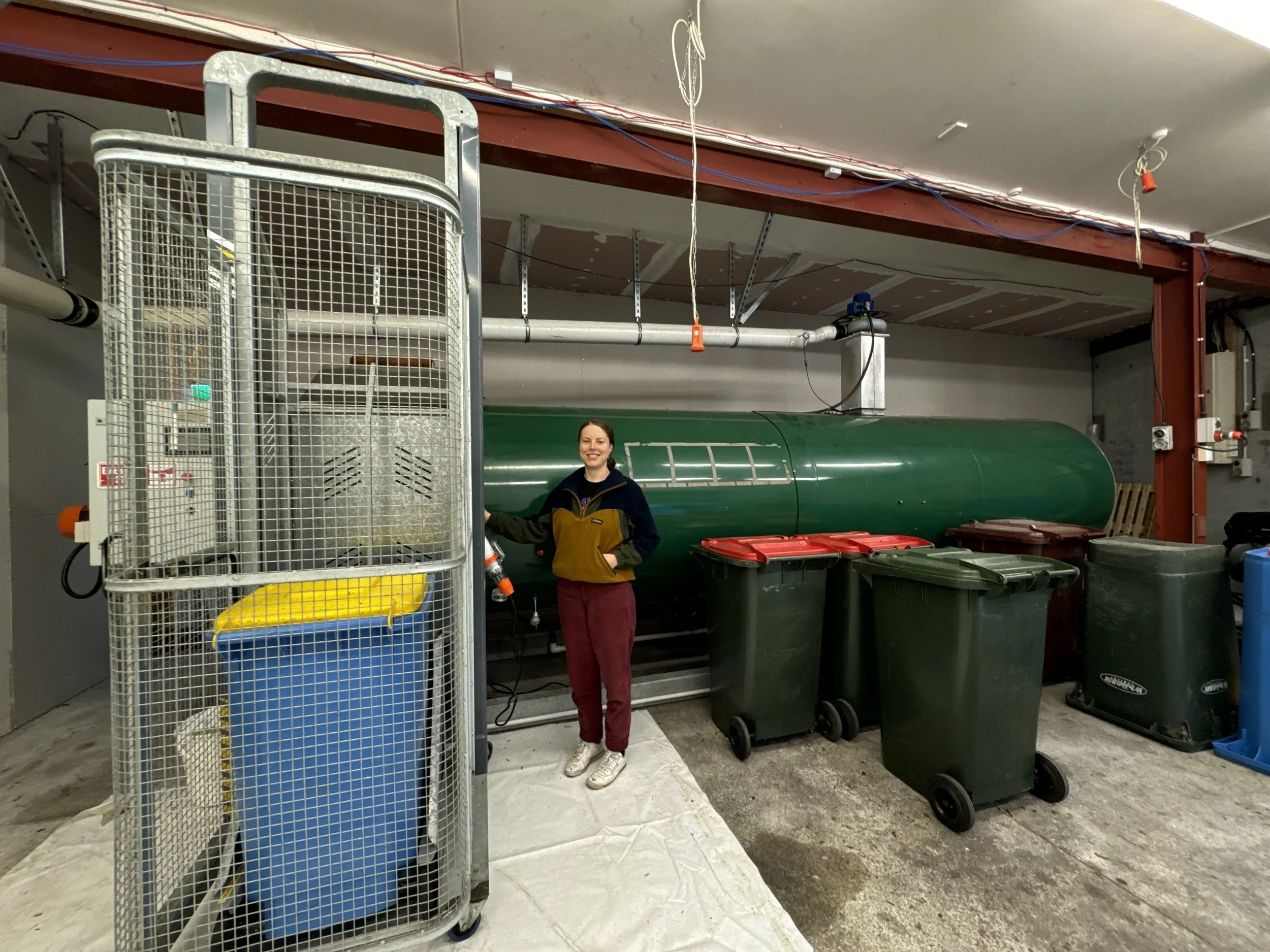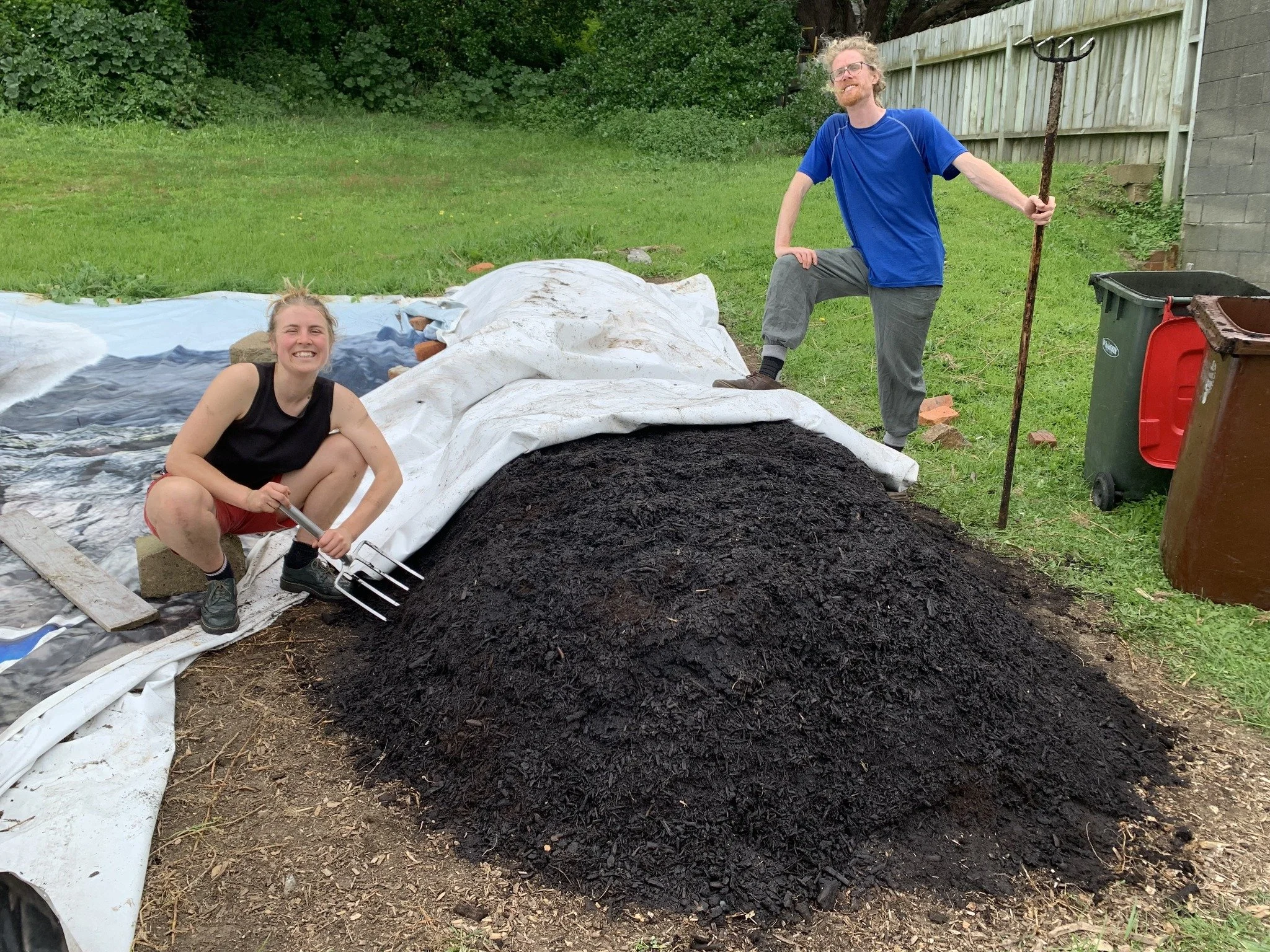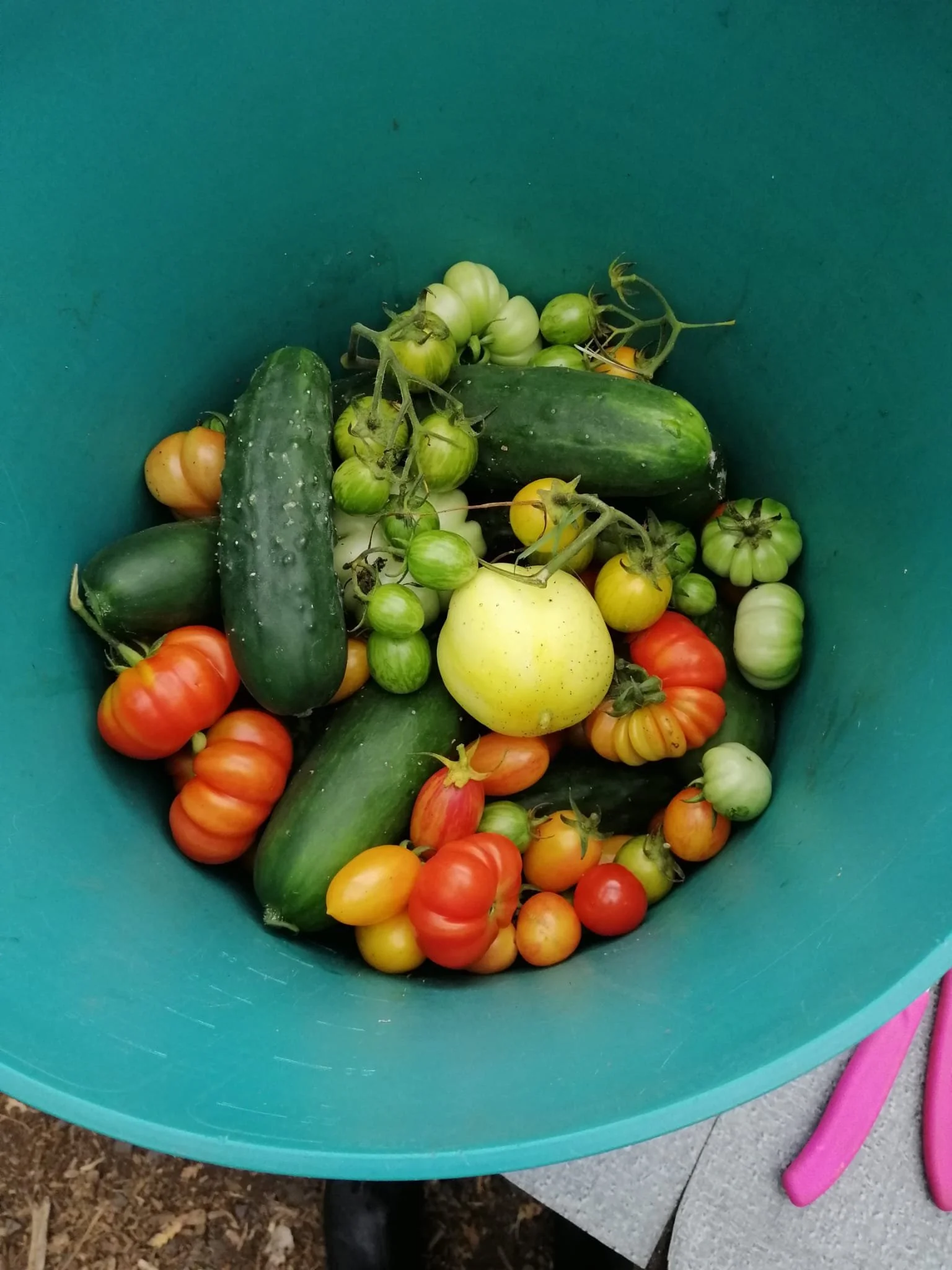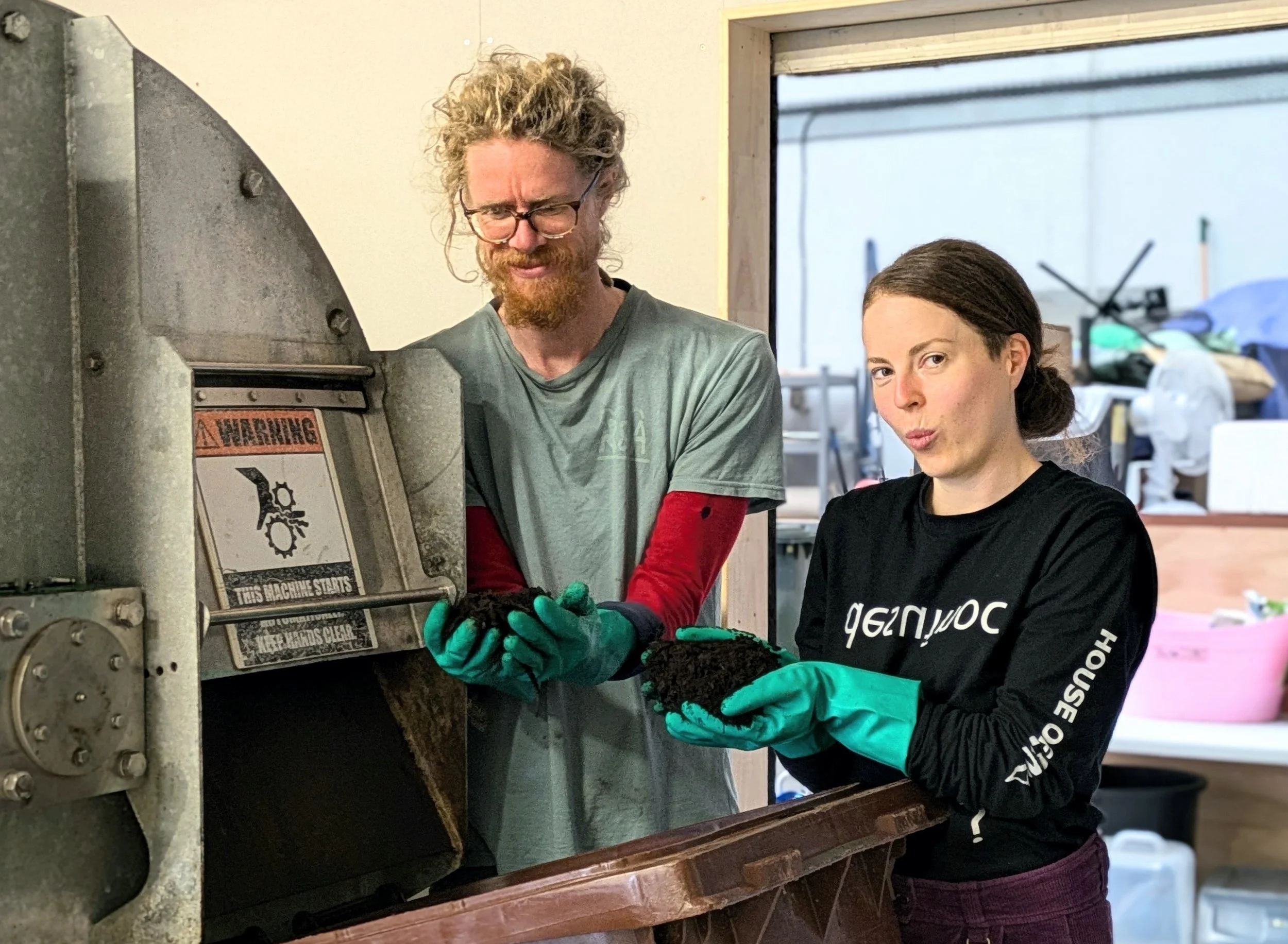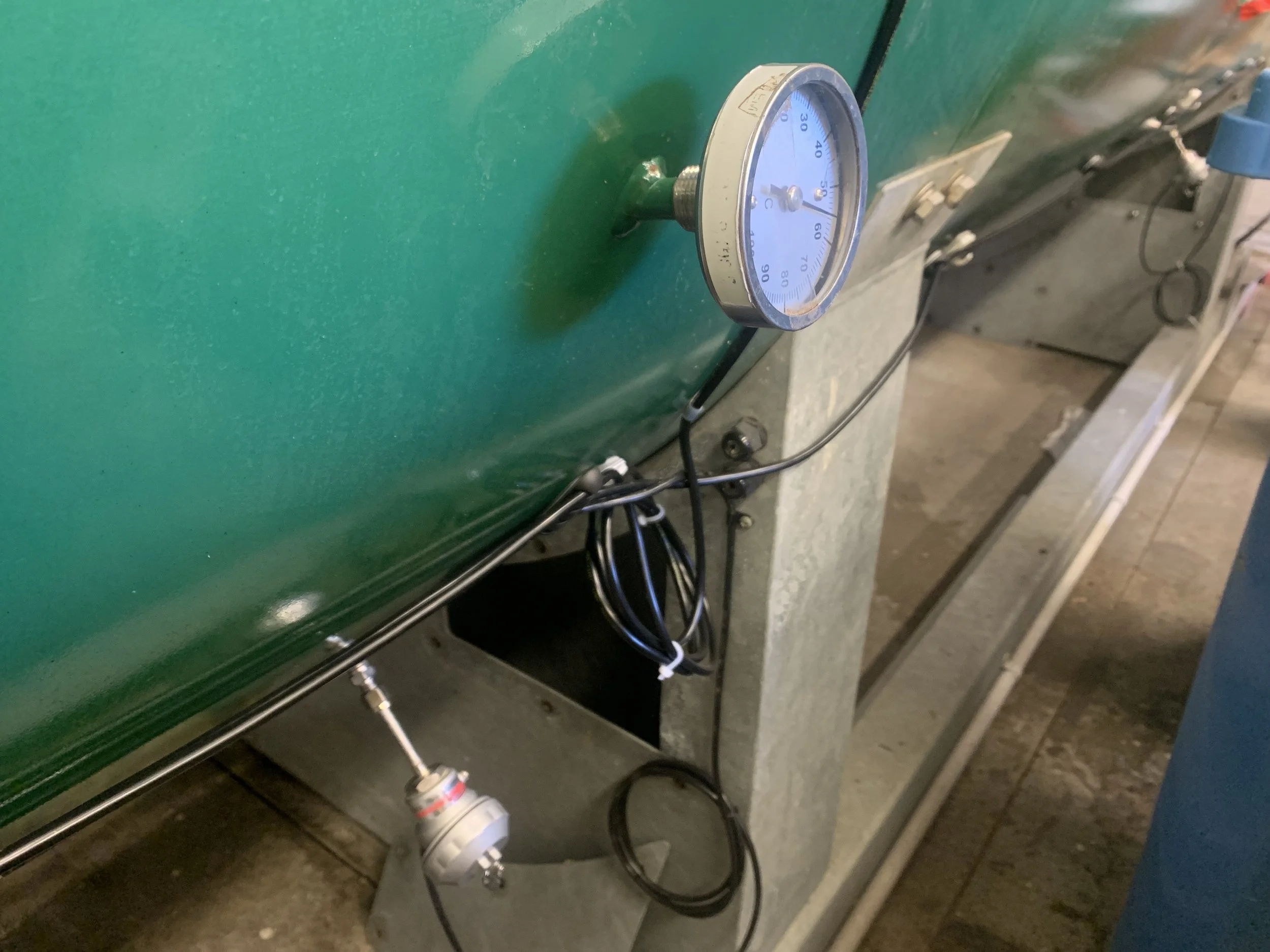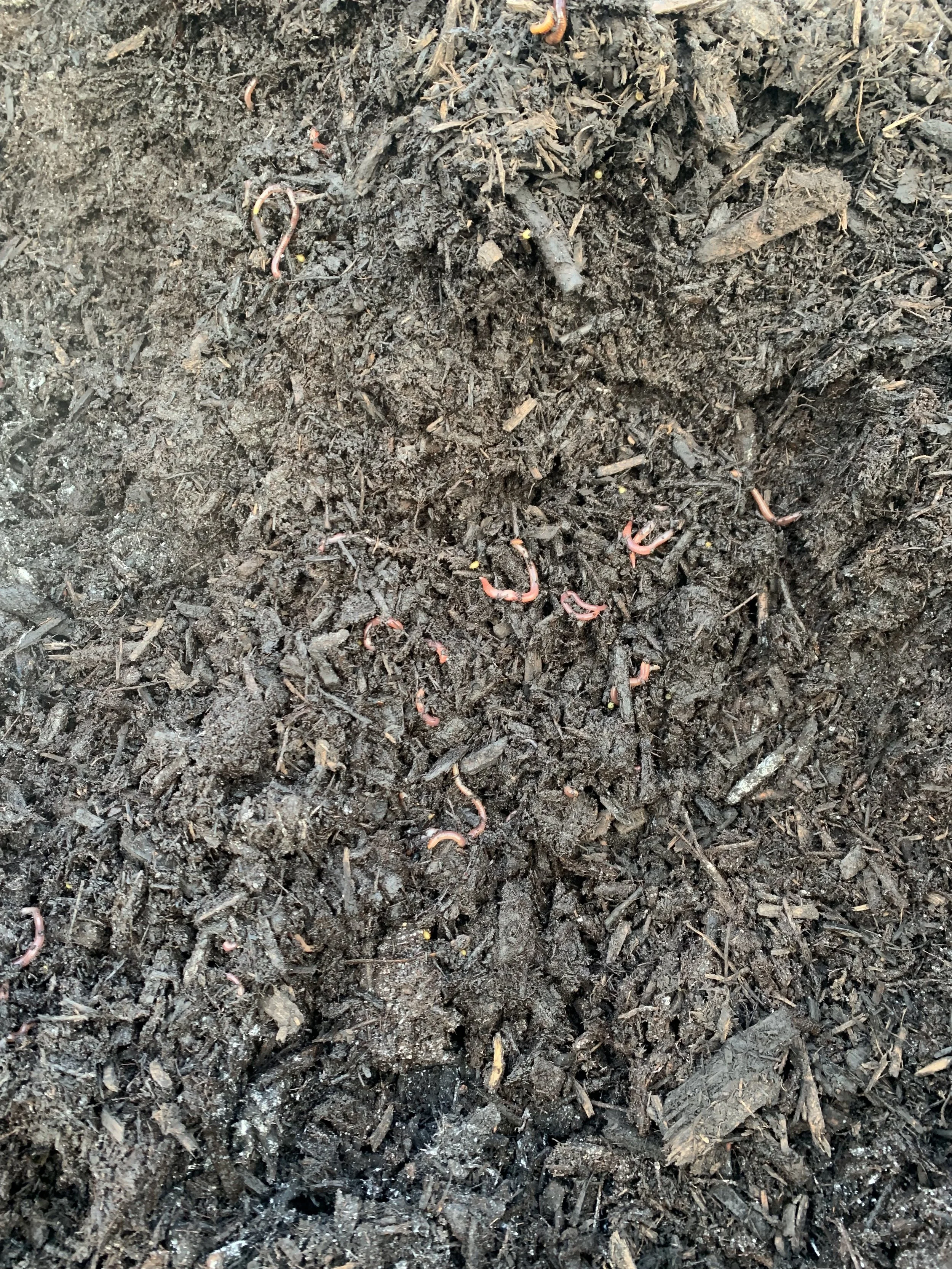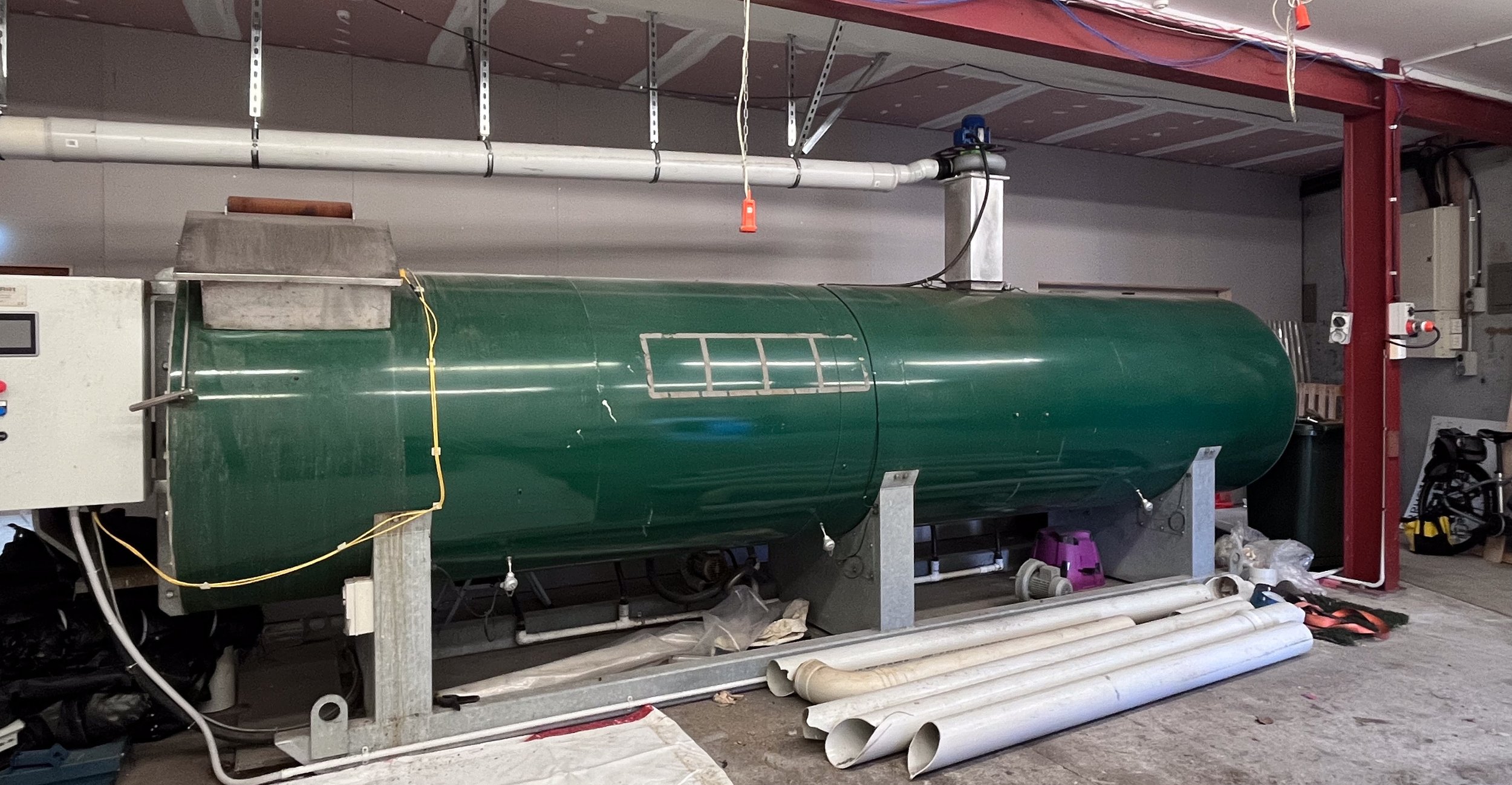With heavy hearts, we have made the incredibly tough decision to shut down our HotRot operation and site. While we were making awesome compost, despite our best efforts we couldn’t see a financially viable future for the operation, as was our goal.
So, we are sadly moving out of the Cairns Street Hub, the shared warehouse and office space we set up, and selling the HotRot. While the HotRot hasn’t worked for us in our current site and business model, we see great potential for it with a different context. If financial circumstances weren’t a factor, we would be continuing the operation. However, given the reality that we would require substantial external funding to keep it running, that it’s getting harder to secure external funding with funding cuts and economic pressure, and without a viable pathway to bridge our financial shortfall in the foreseeable future, we agreed it was too risky to increase our reliance on funding and made the decision to shut it down. The HotRot operation required more money to run compared to our manual operation, and we just weren’t seeing enough added benefits to justify this extra cost and risk for our specific context.
Kate with the HotRot in the Cairns Street Hub
The main drivers of this decision were:
Major delays and disruptions to our operations. We had a 12+ month delay in becoming operational due to a drawn-out building consent process. Then we only had four months in operation until we had to stop as the HotRot needed repairs, and it was over two months before they were finished. It’s a real shame to end the project after only four months in operation; we hoped we’d have a lot more time to trial and test things to develop efficiencies, but the delays meant we just couldn’t afford to spend more time optimising things.
Labour costs being higher than anticipated. Surprisingly, we weren’t seeing our labour going down thanks to using the HotRot, even though it automatically turns the compost for us. There were a few reasons for this, including that the compost was peaking in temperature after leaving the machine and taking a long time to mature outdoors, meaning we were still turning manually after coming out of the machine. It’s possible we may have needed a bigger HotRot and site to get the economy of scale we had envisaged, plus extra machinery like a front loader for turning and moving maturing compost.
Difficulties growing our customer base. We started working on growing our customer base long before the building consent process was finished, however this was a lot harder than we had anticipated. We believe the changing economic and policy context here in Te Whanganui-a-Tara and nationally were major factors. We had also made the decision to move away from providing household collections, as it was very hard to make this break even, and as Council looks to roll out kerbside collections in the next few years. Our focus shifted to collecting from CBD businesses and our drop-off service for households during the project.
Space restrictions of the site. Our approach was retrofitting an existing space into a composting facility, as small as possible to keep rent down. With the benefit of hindsight, what the HotRot system really needed was a more significant investment in setting up a dedicated site and potentially additional machinery, and the space and ability to easily increase capacity to compost more organic waste.
Breahn and Liam P with a glorious maturing pile of HotRot compost
We still see promise for using in-vessel composting systems in urban areas, but we have learnt that our manual composting system is really well suited to Kaicycle’s current business model and foreseeable scale. We’ve returned to manual composting at the farm, and will be pursuing our original “scaling out” approach of setting up more smaller composting hubs over time. When we were investigating this approach a few years back, it was difficult to make progress as urban composting just wasn’t included in legislation. We hope that the legislative environment will become more accommodating of urban composting, to enable community-level action on waste reduction, climate action and kai resilience.
Kaicycle has learned a lot throughout this innovative project, which piloted a new model of medium-scale composting in the city. We will develop ways to share our learnings to benefit organic waste management efforts in Te Whanganui-a-Tara and around the motu.
The Cairns Street Hub!
A big silver lining is that the Cairns Street Hub will live on! Setting up this shared warehouse and office space has enabled other waste-minimising initiatives to take the next step up in scale. We so appreciate our Cairns Street Hub buddies Yum Jar, Nonstop Solutions and Organic Waste Management for coming on this journey with us, being awesome space-mates and stepping up to take the reins for the Hub. If you know anyone looking for affordable warehouse and/or office space in Wellington City, please share our listing with them.
We’d like to share our enormous gratitude for all the funders, organisations and people who have supported this project. To our funders, Wellington City Council, Clare Foundation and the WLG Community & Environment Fund - thank you for enabling us to try an innovative new model for helping to get food scraps out of the landfill and into doing good for our communities and ecosystem. To our key volunteers Tod and Warren, and our wider support network - thank you for all your contributions in bringing this project to life. We look forward to expanding our mahi and impact in other ways, informed by our learnings. With our efforts to make this project work, the core of Kaicycle Composting is in a stronger position going forward.
Breahn and Liam D with wheelies to go into the HotRot - food scraps underneath, mulch on top to keep flies off, and flowers from our collections to top them off!
